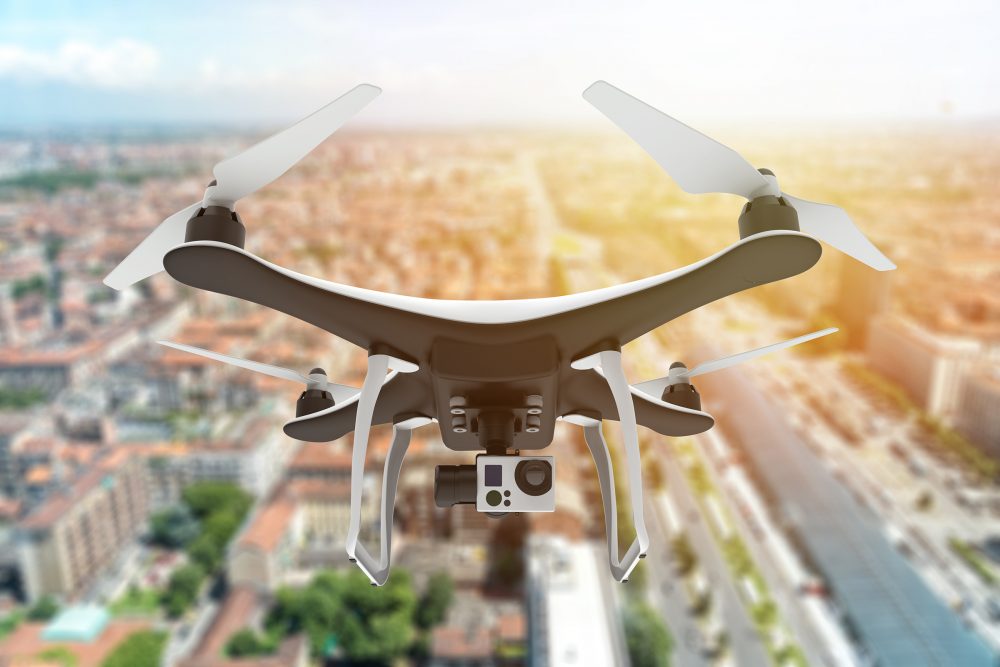Using drones and UGVs to fight COVID-19—but then what?
So far, most of the global surveillance related to enforcing lockdowns and quarantine orders has made use of applications and geolocation data from personal smartphones. Some countries, such as South Korea, have used data from CCTV cameras and credit card records. But as drones and even unmanned ground vehicles (UGVs) enter the foray of technologies being used in response to Covid-19, there needs to be greater transparency in the use of these technologies.
GROWING USE OF DRONES FOR SURVEILLANCE
Video footage from China first showed local law enforcement using drones to target residents still on the streets, ordering them back to their homes and warning about the dangers of not practicing physical distancing. More recently, police services in Spain, France and the United Kingdom have begun using drones in similar ways. Police in Western Australia just announced that they will use drones to enforce new COVID-19 restrictions.
While the public good demands that individuals conform to restrictions during these perilous times, such demonstrations of the current facility of surveillance technology can make us wonder what the new normal will be after the pandemic is conquered.
At the moment, the drones being used to respond to the pandemic monitor public areas and relay messages. As far as we know, there is no intentional targeting of particular individuals or groups. Still, it was jarring to see social-media posts by the Derbyshire Constabulary Drone Unit with footage of individuals walking in the countryside and in parks.
While the public good demands that individuals conform to restrictions during these perilous times, such demonstrations of the current facility of surveillance technology can make us wonder what the new normal will be after the pandemic is conquered. Will the buzzing sounds of drones still be heard, becoming merely background noise to populations in liberal democracies and authoritarian regimes alike?
We must hope not. Michael Richardson, a Senior Research Fellow at the University of New South Wales at Sydney, recognizes “the chilling effects” that such a use of drones would have on protests and political engagement if it persisted.
UNMANNED GROUND VEHICLES
But drones are not the only unmanned platform being used. An unmanned ground vehicle (UGV) is now patrolling the streets of Tunis, Tunisia, helping to enforce the lockdown order in place since March 22. Tunisia is the first country, as far as we know, to use UGVs in their response to the COVID-19 crisis. Will others follow suit, as has happened with drones?
Demand for UGVs is growing among militaries and law enforcement agencies. These vehicles have been used widely in search-and-rescue efforts, as well as in catastrophes such as the Fukushima nuclear plant disaster. In this instance, UGVs were able to go into areas in which radiation levels were too high for human engineers.
Their appeal is also visible in the market demand. According to a recent report by Global Market Insights, Inc. the global market for UGVs will exceed $7-billion by 2026. Major defence companies, including BAE Systems, General Dynamics Corporation, Northrop Grumman Corporation, Rheinmetall, and Lockheed Martin, are making them. But the commercial sector is also vibrant.
The Tunisian UGV was built by a Tunisian robotics company, Enova Robotics, which received a contract from the Tunisian Ministry of Interior. The P-Guard UGV has infrared cameras, an omni-directional audio acquisition system, a thermal camera, and GPS, among other features. Most UGVs maintain a communication link with the operator, but some are more autonomous. Some can patrol “on their own” to some extent.
Many countries seem to have access to UGVs and because of the capabilities of these vehicles, it seems likely—at least possible—that some countries will also employ UGVs to respond to the pandemic.
Still, the pandemic must not be used to normalize more extensive policing of society or the removal of human control from the operations of certain technologies. We must not lose sight of the fact that this is a health crisis and any security measures must be clearly needed and limited to the time necessary to respond to this crisis.
Related: A delicate balance: Responding to a crisis with surveillance tech

